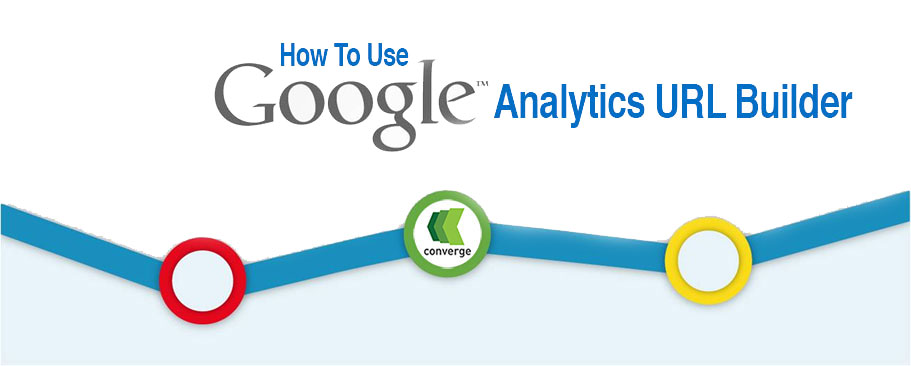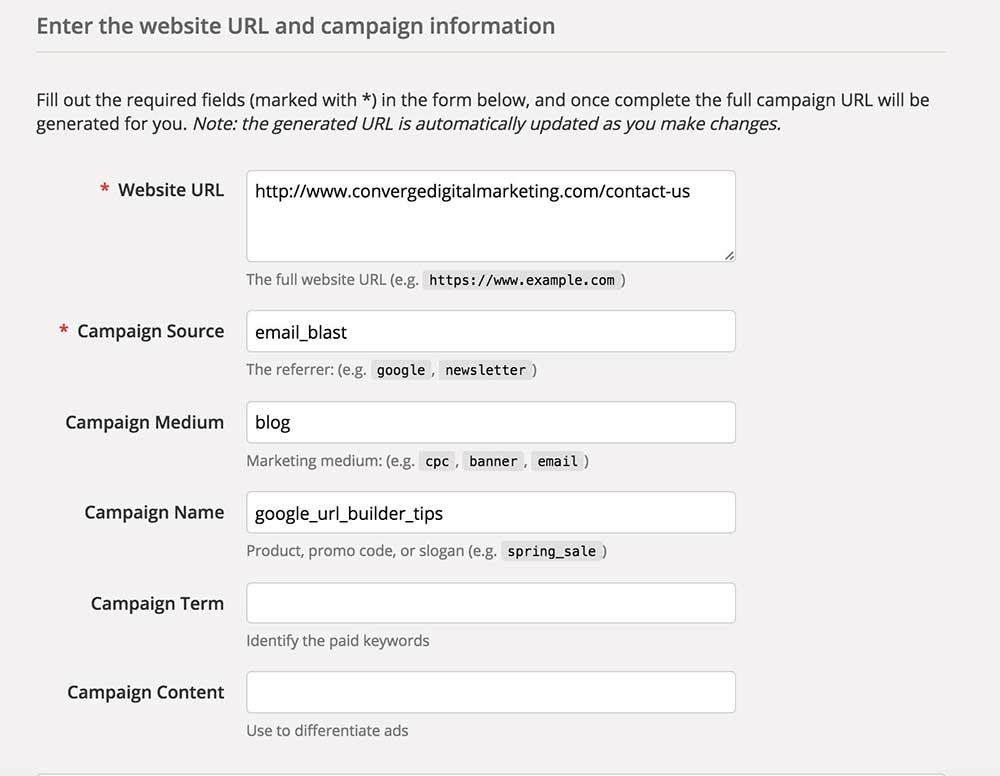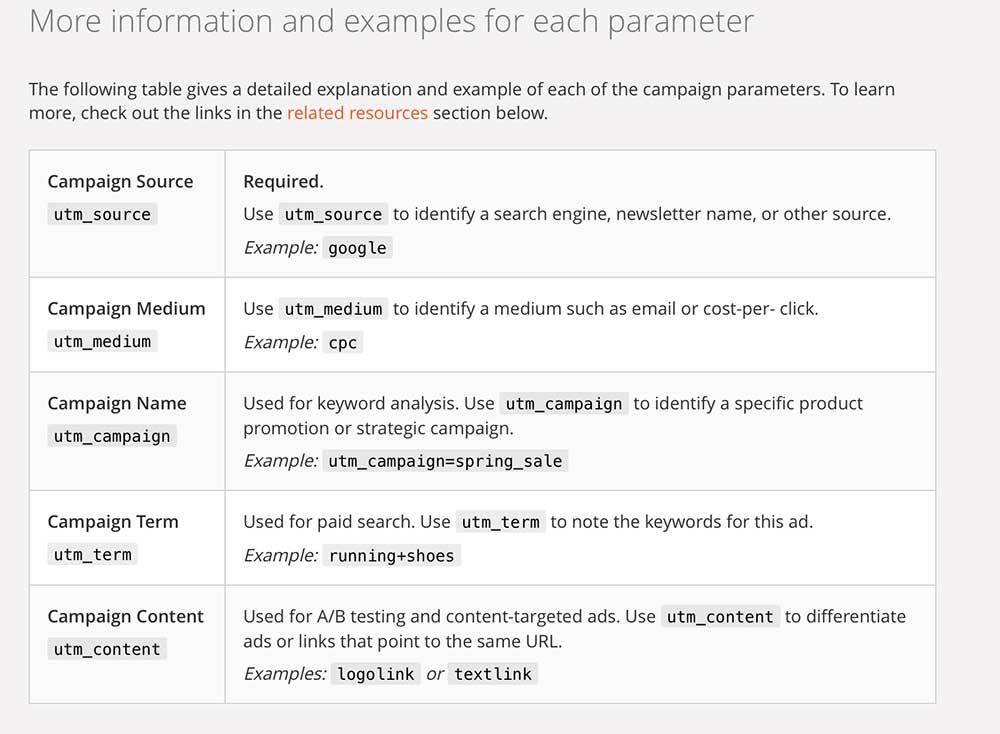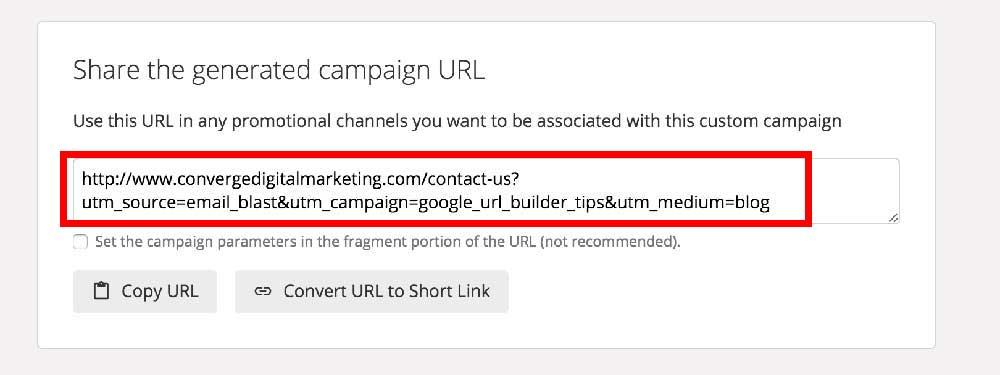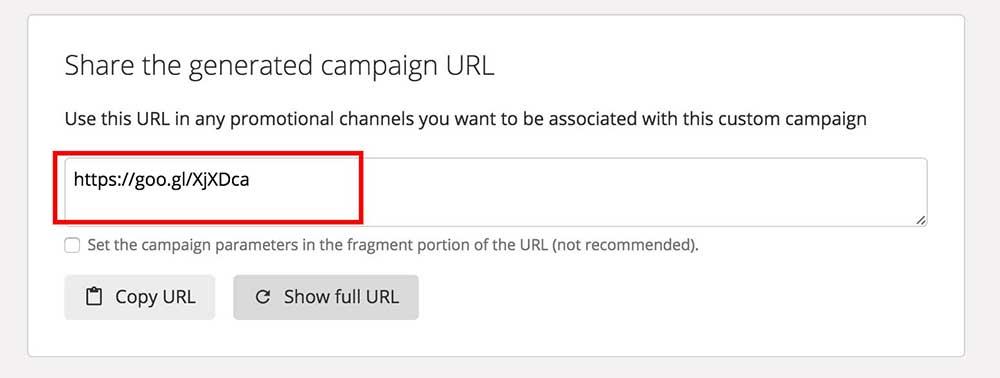How To Use Google’s URL Builder For Better Analytics Tracking
Anytime we do something with digital marketing whether that’s posting on social media and linking back to our website, doing paid advertising or sending an email campaign with email marketing the intention is to drive traffic to our website, convert those visitors into leads and ultimately into customers.
Unfortunately, Google Analytics doesn’t always connect the dots of where a visitor originated from and thus doesn’t give us all the data we need to make future marketing decisions. It’s important to see where the click came from when analyzing what worked and what didn’t. This data tells us what platforms are working so we can make educated decisions and funnel more resources into or ignore completely.
So, what is the easiest way to track and determine which marketing campaigns were successful?
Simply use the Google URL builder to track your links. You can easily tag URLs with unique variables that will help you track which of your campaigns are producing traffic and conversions.
For example, you can use unique campaign parameters to find out how many users come to your website from a link included in a weekly email newsletter, Facebook post or Craigslist ad.
If we were sending an email campaign we could use our email marketing platforms reporting to see how many people clicked the link, but we want to see this data directly in Analytics and track how they interact and whether they convert or not.
Let’s see how the URL gets structured with the Google URL Builder tool.
Instead of using the regular link: https://www.convergedigitalmarketing.com/contact-us/
We use this campaign tracking link instead:
http:// www.convergedigitalmarketing.com/contact-us?utm_source=email_blast&utm_campaign=google_url_builder_tips&utm_medium=blog
How To Use The Google URL Builder Tool
Step 1: Visit the Google Analytics URL Builder and follow these easy steps.
Step 2: Enter the link destination you want users to click. In our example, we are using our contact-us page.
Step 3: Add the parameters that you want to track. There are five parameters listed below, but the first three are the most used unless you’re doing links for paid ads.
- Campaign Source: The referrer: (e.g. google, newsletter)
Tells analytics where the visitor originated. We’re using “email_blast.” - Campaign Medium: Marketing medium: (e.g. banner, email, CPC) Tells analytics what type of medium it’s from. We’re using “blog.”
- Campaign Name: Product, promo code, or slogan (e.g. spring_sale)
Tells analytics the name of the campaign. We’re using “google_url_builder_tips.” - Campaign Term: Identify the paid keywords
- Campaign Content: Use to differentiate ads.
PRO TIP: We like to use the Campaign Content variable if using the same destination more than once on any campaign to improve CRO (conversion rate optimization) and determine where users clicked in the campaign using things like header, footer, sidebar, CTA, text, image1, image2, etc.
Step 4: Copy and paste the newly created link into wherever you want it to appear.
PRO TIP: If you are using Chrome Google includes a URL shortener tool which I suggest if using a naked link as opposed to anchor text. Example: https://goo.gl/XjXDca
Step 5: Repeat these steps for every link you want to track in each promotion.
How to view tagged campaigns in Google Analytics
After your campaign has been launched and enough time has passed to generate traffic you can go to Google Analytics, click “Acquisition” on the left menu and then select “Campaigns.” If you have received any click traffic, you will see your unique campaign name and all relevant information which will undoubtedly help you make better decisions about where best to put your marketing efforts.
Conclusion
If you put these steps into action consistently for anything you want to track, your campaigns will surely benefit from the additional data. If you need assistance with your marketing or analytic data we can help just contact us today for a free consultation, we would love to help.
By the way that contact link is a tagged link using the steps outlined above 🙂
Dale is an accomplished marketer with over 20 years of real-world business sales and marketing experience specializing in e-commerce, email marketing, brand authority, SEO, PPC, SMO and web development. Having served as the Sales & Marketing Director for a multi-million dollar eCommerce company for over a decade, his experience in the trenches provides the foundation most digital marketers just don't have the experience to offer.
About us and this blog
We are a full service agency that delivers compelling, measurable, profitable digital marketing solutions. Our winning solutions and experience helps to deliver great results across several key areas.
Request a free quote
We offers professional SEO services that help websites increase organic search drastically and compete for 1st page rankings of highly competitive keywords.

